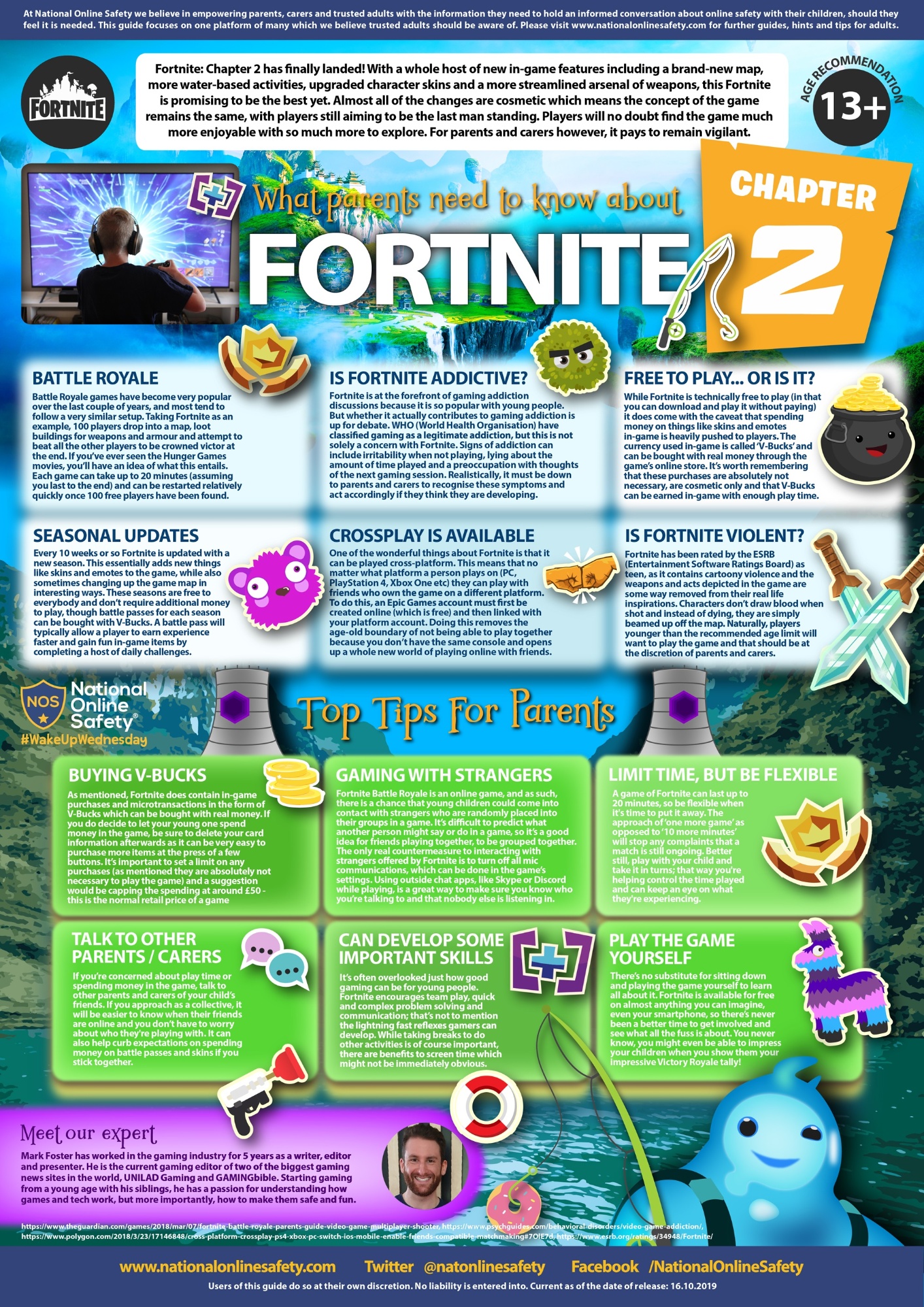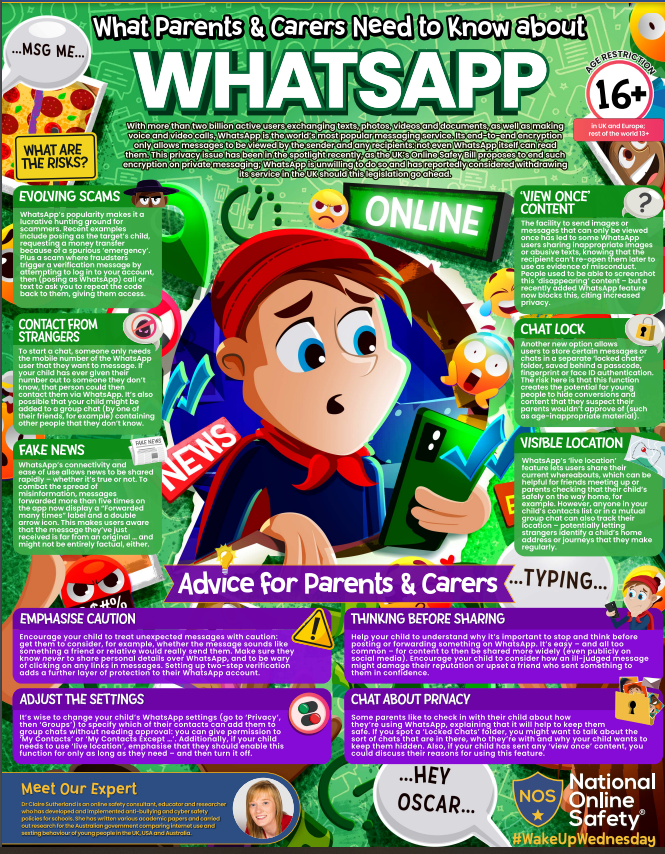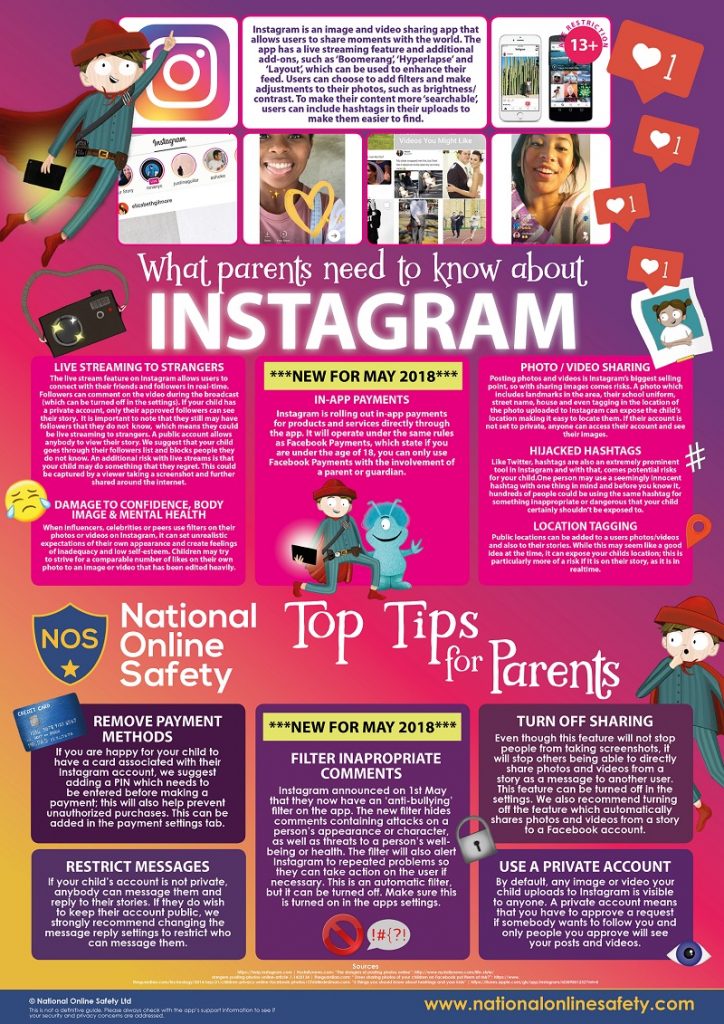E Safety
Online Safety Guide for Parents and Carers
The internet is a great tool for children, providing new ways of communicating, as well as a vast resource of information and possibilities. However, as in any walk of life, there are risks, and people may not be fully aware of the dangers.
In this, we hope to highlight the risks that children may face, provide advice to keep safe online and activities to make them think about online safety and cyber security.
Young people are increasingly using the internet for a host of purposes, including: homework, buying music, online gaming and social interaction.
Many are using it extensively using Smart Phones as they provide a range of communication tools for young people that are easy and quick to use. This allows them to keep in touch with people, whether they are just across town or on the other side of the world. The platforms being used for this and the technology being used are constantly changing, along with the benefits and risks.
Many young people are also playing games over the internet, with games consoles allowing users to go online and play, and also communicate with each other while playing.
At St Mary’s, we aim to educate young people about the internet, and make them aware of the risks, what they can do to protect themselves and to become more aware of online issues, in particular those relating to Cyber Security.
Young people at St Mary’s know that they should speak to any teacher if they are uncomfortable with anything that is occurring on the internet.
We would urge parents to take an interest in what young people are doing online, talk about how they use the internet, and set reasonable limits about what children can and can’t do. Also educate yourself in the key issues surrounding current internet usage.
Herefordshire Safeguarding Children Board offer a huge variety of information, advice and guidance for parents and young people about online safety, sexting and cyberbullying.
Herefordshire Safeguarding Children Board (HSCB)
Top tips for keeping yourself safe online
- Be approachable: Let them know you are always there to help if they get into trouble online. Discuss with your child the importance of reporting inappropriate conversations, messages, images and behaviours.
- Explore online together: Ask your children to show you what they like to do online, and show an interest.
- Talk to them about online friendships: Find out what sites they go to and what they know about their online friends.
- Discuss ‘personal information’: Be clear about personal information and what kind of things are dangerous to share with people they don’t know such as addresses, name of school and phone numbers.
- Teach them about online grooming: Talk to young people about grooming as you would describe ‘stranger danger’. Tell them how easy it is to pretend to be someone else online.
- Agree on boundaries: Set rules about when and for how long they can go online, the websites they can visit, and what is appropriate.
Take Control
- Secure your devices: This interactive guide can help you learn about how to secure your devices.
- Control times of use and restrict certain applications using products such as OurPact
- Secure your search engines and internet browser: The UK Safer Internet Centre has a helpful guide on some of the most popular browsers and how to set up safe browsing and increase privacy settings. Encourage your child to use appropriate search engines and activate and lock the safe search settings on the browsers they use.
- Use privacy settings on social media: Sites like Facebook have privacy settings that will help prevent your child seeing unsuitable advertising or sharing too much with other people. The UK Safer Internet Centre has a range of helpful social media guides that covers safety features on sites like Facebook, Instagram, Twitter and Snapchat.
- Disable geo-location: Check if any apps on your children’s mobile devices have the geo-location enabled, and if so, turn it off, as it shares their location unintentionally.
- Join their social network: Become “friends” with your child on social networks to allow you to see what they are posting.
Cyberbullying
We are shocked by some of the vile, abusive and, in some cases, threatening comments that are posted online by young people. These are comments that they would never say in person. The school will always recommend that incidents of cyberbullying are reported to the police and/or agencies listed below. The pastoral team can facilitate discussions with the PCSO and will support parents and young people throughout.
As with bullying, arguments and friendship issues, in which all parties are abusive and unkind, can leave individuals feeling that they are being bullied. Young people should try to recognise how their own behaviour is affecting the situation.
For a parents guide to cyberbullying recommend by the local authority you can visit the following:
You can report abuse online through ThinkUknow. This is run by the Child Exploitation and Online Protection command (CEOP), a government agency who protect children from harm online and offline. The ThinkUknow website contains a huge variety of information, advice and guidance for parents and young people of all ages. Their aim is to empower young people to identify the risks they may face online and know where they can go for support.
Information, guidance and support are also available from the Childline and Bullying UK.
Sexting
Sexting is when someone shares sexual, naked or semi-naked images or videos of themselves or others, or sends sexually explicit messages. They can be sent using mobiles, tablets, smartphones, laptops – any device that allows you to share media and messages.
Sexting can be seen as harmless, but creating or sharing explicit images of a child is illegal, even if the person doing it is a child. A young person is breaking the law if they:
- Take an explicit photo or video of themselves or a friend
- Share an explicit image or video of a child, even if it’s shared between children of the same age
- Possess, download or store an explicit image or video of a child, even if the child gave their permission for it to be created.
Since January 2016 the law in England and Wales has changed. Although sexting is always a crime, it is felt that there are 2 categories of sexting – experimental and aggressive. In cases of experimental sexting, the police may choose to record that a crime has been committed but may take no formal action. When sexting is aggressive eg, images are requested or images are sent with the intention of harm or without the knowledge of the person, police action will be taken.
For more information visit the NSPCC website.
https://www.nspcc.org.uk/preventing-abuse/keeping-children-safe/sexting/
Requesting removal of sexual images
Childline and the Internet Watch Foundation have come together to provide a service where young people can request the removal of sexual images of themselves which have been shared online. As part of the process the young person will be asked to provide a link to where the image is stored online, rather than sending the image itself.
The YOTI app is verified as legitimate by the National Crime Agency.
The following websites contain details regarding this service:
https://www.nspcc.org.uk/preventing-abuse/keeping-children-safe/sexting
There is a section which covers what you can do if you’ve lost control of a sexual image and refers to the YOTI app.
https://contentreporting.childline.org.uk
This is the portal where you can report images and videos for take down and again refers to using the app to verify age.
Cyber security
Warwickshire and West Mercia Police have launched the #BeCyberSmart campaign to raise awareness of internet crime and to give people the knowledge to stay safe online. #BeCyberSmart encourages people to think about how they behave online and to consider what they can do to protect themselves against online crime. The website has top tips for cyber security.
https://www.westmercia.police.uk/becybersmart2
The following parents guide to cyber security answers frequently asked questions from parents about cyber security and also offers advice and guidance.
Safer streaming
Whilst live streaming can be fun, it’s important to remember that live videos are posted on the internet can remain there forever. They can be recorded and shared without your permission, so if you do decide to ‘go live’, think carefully about what you choose to stream.
For information and guidance on safer streaming, please visit the ThinkUknow website.
Many of our young people are fans of watching video clips on Youtube and some are already vlogging – that is uploading video blogs to youtube. For those of us who did not grow up with Youtube, it can be a surprise to find out just how many videos are out there and the variety of clips that are available.
For a parents guide to vlogging, please visit the Parent Info service from CEOP and Parent Zone.
https://www.thinkuknow.co.uk/14_plus/Need-advice/live-streaming/
e-Safety Awareness

Social media apps are everywhere, some you may know, some you may not.
smartsocial.com helps parents understand the differences and whether they should be allowed on their child’s devices. This site includes a useful guide to the many social media apps available including some of the less well know ones.
Fortnite
Fortnite Chapter 2 is just the latest instalment of this hugely popular gaming experience. Enjoyed by millions of children and young people all over the world and accessible on almost every platform and every device, its brand continues to get stronger and stronger. But should parents worry? Can the game become an addiction? And how violent is it? Find out with this new guide.



Keep your child safe on WhatsApp
What are the risks?
- Bullying, particularly in group chats
- Seeing content of a sexual nature, or showing violence and hatred
- Settings that allow messages to disappear after 24 hours or 7 days. This could make it harder to track bullying, and your child might share things they wouldn’t otherwise because it’ll disappear
- Sharing their live location, particularly with people they don’t know in person
- Spam or hoax messages
- Being exposed to strangers through group chats
WhatsApp says the minimum age to use it is 16, but younger children can still use it easily.
6 steps to help your child use WhatsApp safely
1. Keep their personal information and location private
By default, WhatsApp shows profile photos, status and when you last used it to all users.
Encourage your child to only share this information with their contacts, and be careful about who they talk to on the app, as anyone could pretend to be a child online.
To check and change these settings:
- On an iPhone, open settings in WhatsApp (the cog icon), then Account > Privacy. Tap the setting you want to change, then choose who it should be visible to
- On Android, tap the 3 dots in the top-right of the home screen, then > Settings > Account > Privacy. Tap the setting you want to change, then choose who it should be visible to
WhatsApp also has a feature that you can use to share your ‘live location’ with others. Tell your child to keep this turned off, or to only share their location with people they trust.
To check this:
- On an iPhone, go to phone Settings (the cog icon) > WhatsApp > Location, and tap to change if you need to
- On Android, go to privacy settings as above, then scroll down to ‘Live location’, and tap to change if you need to
2. Remind your child to be careful about what they share
It’s easy to forward messages, photos and videos to others on WhatsApp. Even if your child sets a message to automatically disappear or deletes it after sharing it, the person they send it to could still screenshot it, forward it to someone else, or save it.
So before they share anything, tell them to ask themselves: “Would I want others to see what I’m about to send?”
3. Remind your child they can leave group chats
If they see something they’re not comfortable with in a group chat, or are in a chat with someone they don’t know and are uncomfortable with, they should leave the group. To do this:
- On an iPhone, go into the group chat, tap the group subject, then > Exit group > Exit group
- On Android, go into the group chat, tap the group subject, then > Exit group > Exit
4. Make sure your child knows how to report and block people
When they first receive a message from an unknown number, they’ll have the option to report it.
If someone in your child’s contacts is upsetting them or making them uncomfortable, they can report or block them at any point (WhatsApp won’t tell the user they’ve been blocked/reported).
To do this:
- On an iPhone, open settings in WhatsApp, go to Account > Privacy > Blocked > Add New…, then find the contact they want to block, and tap the contact
- On Android, tap the 3 dots icon, then Settings, then tap Account > Privacy > Blocked contacts, tap the icon in the top right showing a person and a plus sign, search for the contact they want to block, then tap the contact to block them
To report issues like offensive or abusive content or spam:
- On an iPhone, open the chat with the user you want to report, tap the contact then then tap Report Contact > Report And Block
- On Android, open the chat with the user you want to report, then tap the 3 dots icon, then > More > Report
5. Encourage your child to watch out for spam and hoax messages
These can appear to come from contacts, as well as people they don’t know. Tell your child to watch out for messages that:
- Ask them to tap on a link, or specifically to click on a link to activate a new feature
- Ask them to share personal information like bank account details, date of birth or passwords
- Ask them to forward the message
- Say they have to pay to use WhatsApp
- Have spelling or grammar errors
6. Tell our school about any bullying they experience
Look for signs that your child may be being bullied, like being afraid or reluctant to go to school, feeling nervous, losing confidence or becoming distressed and withdrawn, or losing sleep.
Are your privacy settings enough?
Many young people do not realise that their current social media privacy settings are not sufficient and that anyone can view their online activities. At St Mary’s we try to educate our young people to increase their security and privacy settings so that their activities can only be viewed by their friends and parents. Ensuring that privacy settings are applied is part of keeping yourself safe online.
The pastoral team at St Mary’s is always available to offer advice with regards to privacy settings and Webwise offers social networking advice for teens
Advice on Social Media use for teenagers
Device management
Device management can present some technical challenges, however there are many tools now available for the management of mobile devices some of which are even free.

If you are concerned about the use of devices, some simple practical tips:
- Keep computers & devices in ‘public’ areas of the home.
- Physically separate your child from their device e.g. (9pm – 7am)
- Buy them an alarm clock (The excuse about needing the device for morning alarm/clock then goes away)
- Add your child as ‘friend’ on Facebook, or follow on Twitter & Instagram.
- Converse with them about these issues!
Screentime
If you have iPhones/iPads there is a free facility within iOS 12 (The latest software release available free for most recent devices) This new facility allows you to monitor time spent on devices and create downtime periods.
More information is available here https://support.apple.com/en-gb/HT208982
Restrictions
On most devices there is a restrictions section that can be protected by a separate passcode. On Apple devices prior to iOS 12 this is under the Setting app. The functions are now under the screentime options from iOS 12 onward.
Information on how this is done on Android devices can be found here:
https://www.wikihow.tech/Set-Up-Parental-Controls-in-Android
Ourpact
Ourpact is a third party website/application available for both Android and Apple devices which once setup allows parents to block devices and individual apps as well as create scheduled block times for homework time/bedtime etc. Ourpact can be operated as a FREE facility which can be expanded by via a small monthly subscription to provide additional functionality.
More information is available here: https://ourpact.com/
End to End Encryption








